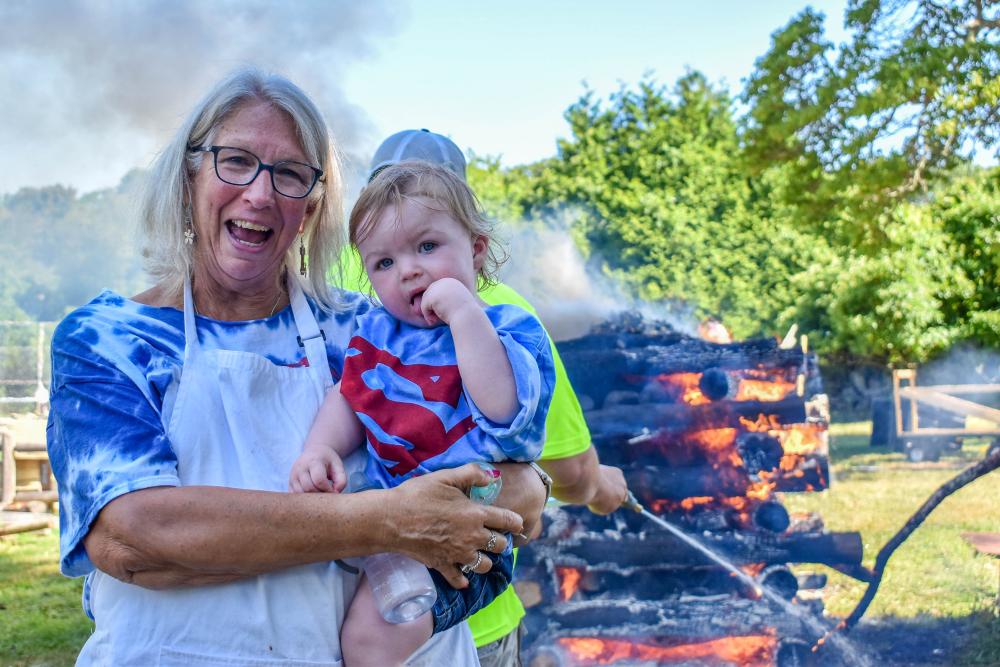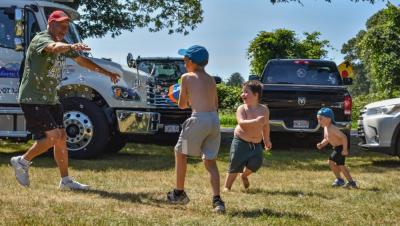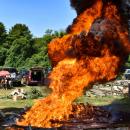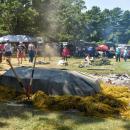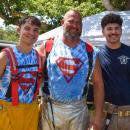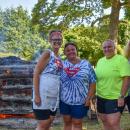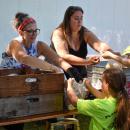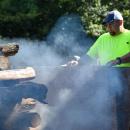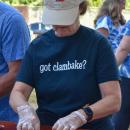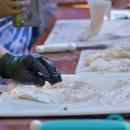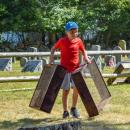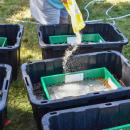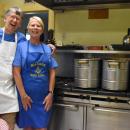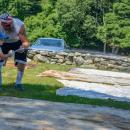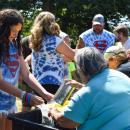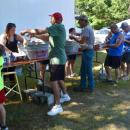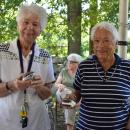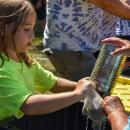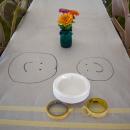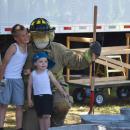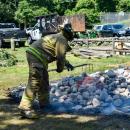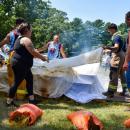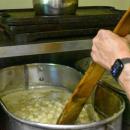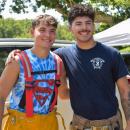‘This is what it’s all about’: Generations keep over 90-year clambake tradition alive
John “Uncle John” Reid still remembers when the Smith Neck Friends’ clambake served tripe — cow stomach, steamed in paper bags until it turned translucent and jiggled like a square of gelatin.
“We used to call it clambake jello,” he laughed, noting nobody wanted to eat it when they were told what it really was.
That dish is long gone, but the second Saturday in August remains just as memorable, drawing generations back to Dartmouth for chowder, clams and a reunion nine decades in the making.
“It’s tradition,” said Debbie Reid, who has attended the bake 63 times, only missing two. “The camaraderie — the families get together — and it’s just a wonderful thing.”
This year’s bake, held Saturday, Aug. 9, brought together about 176 guests and roughly 30 workers. On the menu, as always, was homemade quahog chowder and brown bread to start, followed by stuffing, fish, corn, sausage, clams, potatoes and watermelon.
Pulling off this style of clambake is no small feat. Prep begins two weeks in advance, Debbie explained.
“Yesterday, we were picking new seaweed and the day before we were building the fire,” she said. An average of 12 to 20 people turn out for the work each year, with more arriving on bake day to help serve.
One unique element of the Smith Neck bake is its fire. Instead of lighting it directly over the pit, members build a separate blaze over a bed of rocks. Once the rocks are searing and the wood has mostly burned, a crew in protective gear rakes them into the pit, avoiding any embers.
Then comes the seaweed. Debbie said she loves hearing the “pop, pop, pop” as it hits the rocks.
The food is packed into netted bags, which is a change from Debbie’s childhood.
“We’ve simplified it a little bit, which is wonderful,” she said.
She recalls as a kid, her job was washing clams in galvanized pans sprinkled with pepper.
“They had all us little kids just play with the clams,” she laughed.
Debbie’s daughter, Jessica Medeiros, grew up the same way, learning the rhythm of bake from day one as her mother carried her in a backpack.
“It’s the most wonderful day of the year,” she said, noting she could cry just from talking about it. “It’s better than Christmas. It’s better than Easter. You wake up before the alarm clock even goes off clambake morning.”
Her earliest jobs were picking seaweed, carrying chairs, wetting tarps, and, of course, washing clams. Now, she watches her own children, and others in the community, take on those roles. This year, they helped haul chairs, sort food and learn clam-washing techniques from member Larry Pistreng.
Clam prep remains an art, according to Larry. Washing the mud off first, the clams are then soaked in cornmeal and ground red pepper. The clams like the cornmeal and will eat it, but the red pepper causes them to spit, clearing out any grit.
This year brought a new challenge — a red tide bloom that threatened supplies. Fortunately, the group had already secured their 13 bushels from Maine.
Bakemaster William “Billy” Reid’s wife, Jenn, described the bake’s signature assembly line: long tables with volunteers on each side, moving in sync to fill enough food bags for about 200 people.
Everyone has a favorite task, Jessica said, including the moment when half-frozen sausages snap with a satisfying pop.
Earlier that morning, while members were focused on “numbers, numbers, numbers,” deputy bakemaster Eric Reid took a moment to look around as kids ran in the grass while adults caught up in the sun.
“This is what it’s all about,” he said.
Jenn’s son Avery, now 20, began helping with the fire at age 15. She’s proud to see him and others stepping up, but she says it’s also a bit scary at times.
“Every fire has its own personality,” Eric noted — this year’s required careful tending to burn evenly.
For many, the bake dictates the calendar. “You plan everything around clambake,” Jessica said. “You can’t get married on clambake weekend.”
Some travel across the country for the event. John Reid has attended for 66 years, returning from Ohio every year. He spent much of the day running around with the kids, throwing water and playing with the bubble machine.
“It’s been a lot of fun,” he said. “Tradition has been the greatest thing. You always know where you’re supposed to be the second Saturday in August.”
He highlighted the attendees who are just as devoted to the bake each year and will often request to sit in specific spots so they can be served by their favorite volunteer.
John said. “We only have two things that we ask of people when they come to the clambake — leave a little bit heavier and a little bit happier.”
Many traditions are unchanged, like the chowder. Made with quahogs and the not-so-secret ingredient, fatback, Nancy Cannon took over chowder duty with Jonathan Doherty after her father Paul died in 2018.
She recalls the earlier chowder cooks, cigar in hand, guarding the kitchen door and the times she would “sweet talk” her way inside.
Jenn acknowledged that many members are now in their late 80s and early 90s. These days, they can relax, watch the bake unfold, and let the younger generations do the work.
“Let them make fun of us when we trip on our feet,” she joked.
For all its moving parts, Jenn describes the clambake as “a very well planned, well oiled machine.”
Jessica chimed in, “But there’s an element of chaos.”



